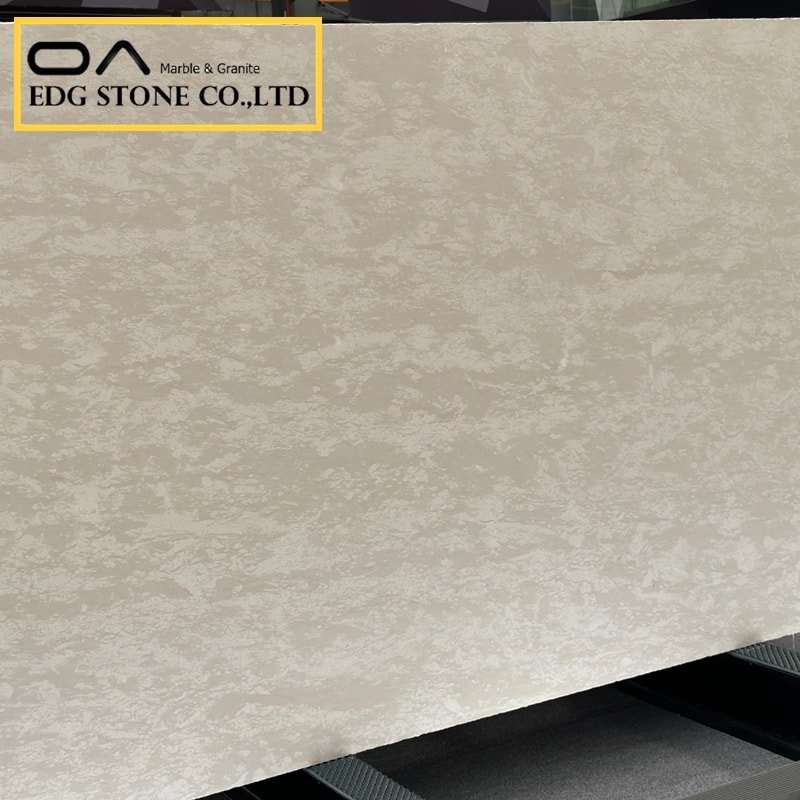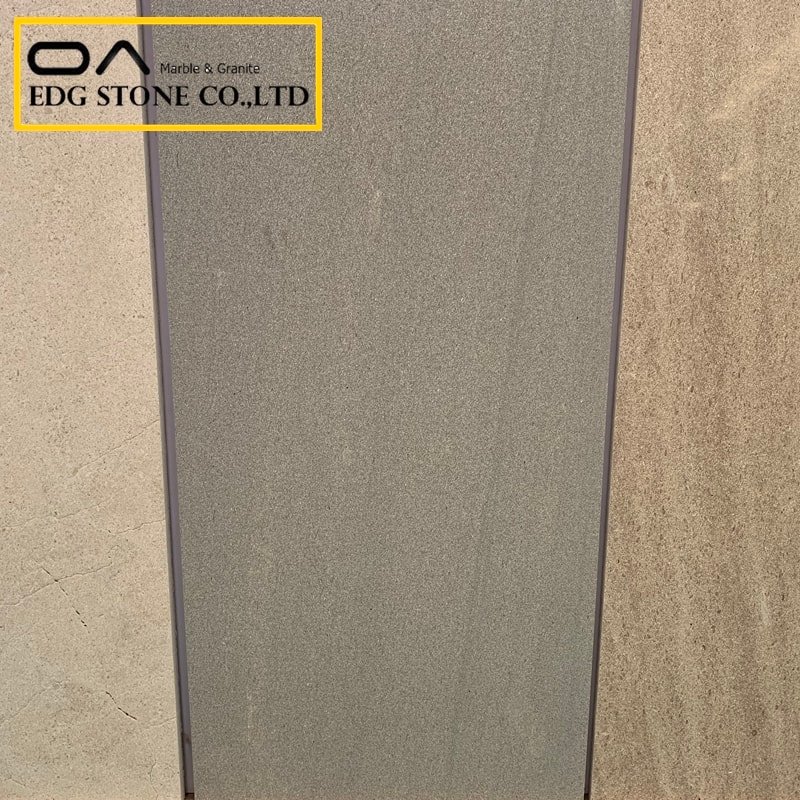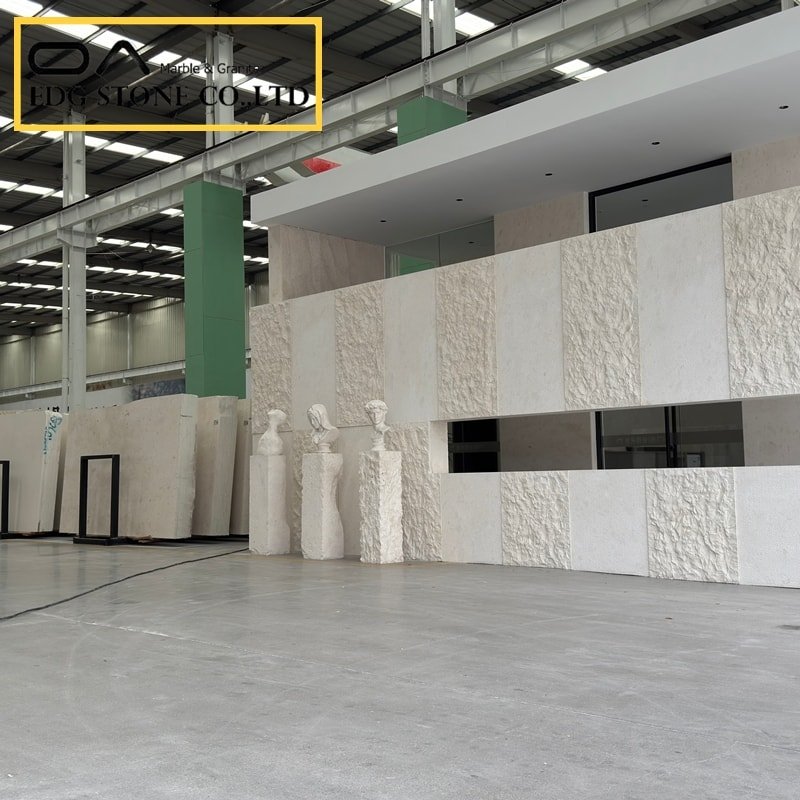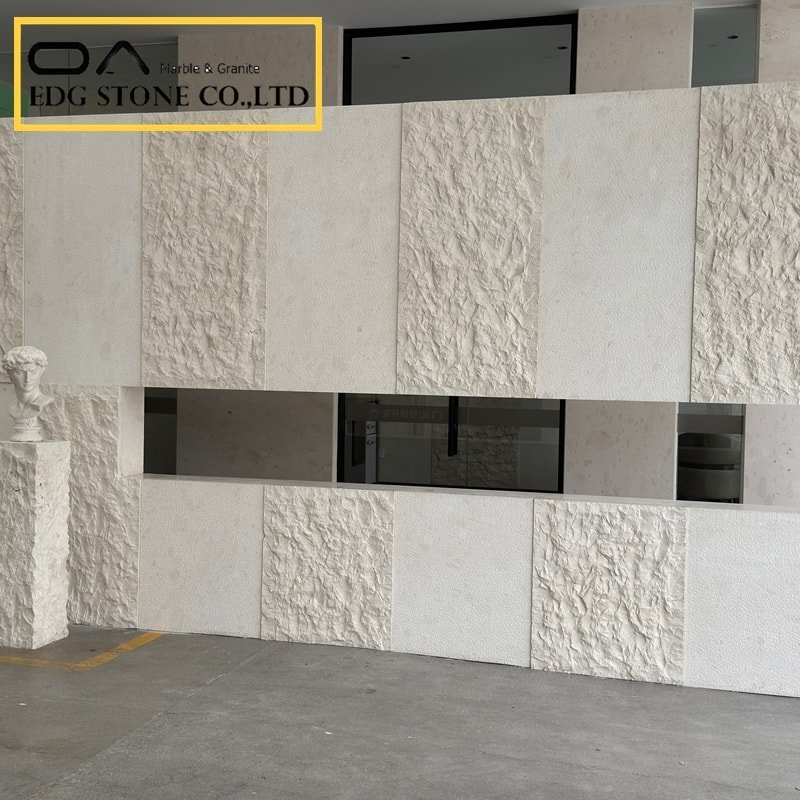Limestone is a ubiquitous sedimentary rock that plays a vital role in natural landscapes, construction, and industry. Formed over millions of years through biological, chemical, and physical processes, limestone has captivated geologists, architects, and homeowners alike. In this comprehensive 2,000+ word guide, we’ll explore what limestone is, how it forms, its characteristics, various types, practical uses—from limestone slabs and limestone tiles to limestone wall panels and exterior decor—as well as its chemical composition (including the limestone formula and limestone color). We’ll also dive into common FAQs such as “what is limestone made of,” “what is limestone used for,” and “what is the limestone chemical formula.” By the end of this post, you’ll thoroughly understand the rock, its broad applications, and its significance in both natural and built environments.


How Is Limestone Formed And What Is It?
Table of Contents
ToggleLimestone primarily forms in shallow, warm marine environments where organisms such as corals, foraminifera, and mollusks secrete calcium carbonate (CaCO₃). Over time, the skeletal fragments and shells accumulate on the sea floor, gradually compacting into sedimentary layers. There are two main modes of limestone formation:
Biogenic (Organic) Precipitation
Marine Organisms: Organisms like corals, shellfish, and microscopic plankton extract dissolved calcium and bicarbonate ions from seawater to form their calcium carbonate skeletons and shells.
Accumulation: When these organisms die, their calcareous remains settle to the bottom, accumulating as carbonate sediments.
Lithification: Over geologic time, pressure and minor chemical changes cause these carbonate deposits to compact and cement together, forming biogenic limestone, also known as fossiliferous limestone Encyclopedia Britannica青少年百科全书.
Chemical Precipitation
Direct Precipitation from Water: In some settings, such as warm lagoons, caves (forming stalactites and stalagmites), or thermal springs, calcium carbonate can precipitate directly from supersaturated waters.
Evaporative Conditions: As saline, alkaline waters evaporate, calcite or aragonite begins to crystallize out of solution. This process forms varieties like travertine (common in hot spring deposits) or tufa (in cooler freshwater settings) 维基百科Encyclopedia Britannica.
Additionally, mechanical redeposition can produce clastic limestone. Here, preexisting limestone fragments are eroded, transported, and redeposited, resulting in clastic beds of carbonate debris. These processes contribute to the diversity of limestone types (e.g., chalk, coquina, caliche) that vary in texture, color, and hardness.
Limestone’s chemical formula is typically CaCO₃ (calcium carbonate), though some limestones contain measurable amounts of magnesium, classified as dolomitic limestone or dolomite (CaMg(CO₃)₂.) U.S. General Services Administration维基百科. The presence of impurities such as iron oxides, clay, or organic material can impart a wide limestone color spectrum, ranging from pure white (e.g., chalk) to various shades of gray, tan, or even black.
Key Points on Limestone Formation
Primary Composition: Mostly calcite (CaCO₃) and sometimes aragonite (another CaCO₃ polymorph). 维基百科EBSCO.
Biogenic vs. Chemical Origins: Biogenic limestones derive from skeletal debris (e.g., fossiliferous limestone), while chemically precipitated limestones (e.g., travertine, tufa) form from directly crystallized CaCO₃.
Environmental Indicators: Limestone often signals past marine conditions; karst features (caves, sinkholes) indicate long-term dissolution in action.

Limestone: Characteristics, Uses, And Problems
Limestone’s unique properties have made it an essential resource for centuries. Its characteristics—ranging from hardness to porosity—determine its many uses, but also contribute to potential challenges (“problems”) in certain applications.
Key Characteristics of Limestone
Composition & Texture
Calcite/Aragonite Content: Primarily CaCO₃ (calcite).
Grain Size: Varies from microcrystalline (micrite) to coarse fossiliferous textures.
Fossil Content: Visibly contains shell fragments, corals, foraminifera, and other biological debris.
Porosity & Permeability
Microporosity: Some limestones (e.g., chalk) are highly porous, absorbing water and prone to frost damage in cold climates.
Low Porosity: Others (e.g., oolitic, dense limestones) have low porosity, making them more durable—ideal for limestone slabs and limestone tiles in flooring and countertops.
Hardness
Mohs Scale: Around 3–4, softer than granite (~6–7) and marble (~3–4), but sufficient for architectural uses.
Scratch Resistance: Moderately scratch-resistant; can be scratched by metal tools or heavy furniture if unsealed.
Chemical Reactivity
Acid Sensitivity: Dissolves in dilute acids (e.g., rainwater containing CO₂ forms carbonic acid, promoting karst landscapes).
Efflorescence: Flaky white salt deposits can appear on surfaces when moisture carries dissolved salts to the surface and evaporates.
Color Variations
White/Light Gray: Common in pure, fossil-poor limestones (e.g., chalk).
Beige/Tan: Impurities (clay, iron oxides) impart warmer hues.
Dark Gray/Black: High organic or sulfide content can create darker colors.
Common Uses of Limestone
Construction Material
Dimension Stone: Carved into blocks or cut into limestone slabs for flooring, countertops, or facades. Popular varieties include Indiana Limestone and Portland Stone.
Aggregate: Crushed limestone (rock) is used for road base, concrete aggregate, and railway ballast.
Cement Production: The Primary ingredient in Portland cement—calcined to produce lime (CaO), and then recombined with other materials.
Architectural Cladding: Cut into limestone wall panels for interior and exterior cladding, adding natural texture and elegance.
Decorative & Landscaping
Limestone Tiles: Polished or honed limestone tiles are used in kitchens, bathrooms, and living areas for a natural stone aesthetic.
Limestone Exterior Decor: Outdoor paving, steps, garden statues, and retaining walls frequently employ durable limestones like travertine or Roman Limestone.
Limestone Cut to Sizes: Custom-cut limestone cut to sizes for bespoke architectural elements—steps, window sills, columns, balustrades.
Industrial & Agricultural
Soil Treatment/Fertilizer: Ground limestone (lime) neutralizes acidic soils, improving fertility.
Water Treatment: Added to water treatment facilities to adjust pH and remove impurities.
Steel & Glass Manufacturing: Used as flux in blast furnaces and as a stabilizer in glass production.
Limestone Rock Dust: Applied to roads for dust control and to stabilize roadbeds.
Cultural & Historic
Many historic monuments and cathedrals (e.g., the Great Pyramids of Giza, Notre-Dame in Paris) are constructed of limestone due to its malleability when quarried and long-term durability.
Common Problems & Limitations
Weathering & Erosion
Acid Rain Damage: Industrial pollutants (SO₂, NOₓ) combine with water vapor to form acids that dissolve limestone surfaces, causing erosion on statues and buildings in urban areas.
Frost Action: In climates with freeze-thaw cycles, water soaks into porosity, freezes, expands, and causes spalling or cracking.
Staining & Biological Growth
Stains: Porous limestones can absorb oil, wine, or other staining agents. Sealing is necessary for kitchen uses or high-traffic areas.
Algae & Lichen: Humid environments encourage algal or lichen growth, which can discolor and degrade surfaces.
Structural Limitations
Load-Bearing: While strong in compression, limestone is brittle under tensile stresses; large spans or unsupported cantilevers require careful structural design.
Differential Weathering: Layers of softer and harder limestone in the same outcrop can lead to uneven weathering, undermining façade stability.
Maintenance Requirements
Regular Sealing: For polished limestone tiles or slabs in kitchens and bathrooms, annual sealing helps prevent stains and etching.
Cleaning Agents: Acid-based cleaners must be avoided; use pH-neutral stone cleaners to preserve the finish.
In summary, while limestone’s versatility and aesthetic appeal make it highly desirable, understanding its physical and chemical characteristics is essential to mitigate potential problems, whether you’re installing limestone exterior decor or specifying limestone slabs for countertops.
What is a Limestone Landscape?
Limestone landscapes—often referred to as karst landscapes—are characterized by dramatic features created when slightly acidic water dissolves calcium carbonate bedrock. These landscapes are prized for their unique geomorphology, ecological significance, and scenic beauty.
Key Features of Limestone Landscapes
Sinkholes (Dolines)
Formation: Rainwater, slightly acidic due to dissolved CO₂, seeps into limestone fractures and slowly enlarges them.
Types: Cover-collapse sinkholes (sudden collapse of a cave roof) and solution sinkholes (gradual subsidence as rock dissolves).
Examples: Many parts of Florida (USA) and the Yucatán Peninsula (Mexico) are dotted with thousands of sinkholes.
Caves and Caverns
Speleogenesis: Underground voids form where groundwater dissolves bedrock, creating extensive cave systems.
Stalactites & Stalagmites: Secondary mineral deposits from dripping water create iconic formations.
Notable Caves: Mammoth Cave (USA), Carlsbad Caverns (USA), and Jenolan Caves (Australia).
Karst Towers & Limestone Pavements
Karren: Small solution channels on exposed limestone surfaces produce “clints” (flat surfaces) and “grikes” (deep fissures).
Tower Karst: In tropical climates (e.g., Guilin, China), steep limestone towers rise abruptly from flat plains due to selective dissolution.
Springs & Losing Streams
Resurgence Springs: Where groundwater resurfaces after traveling through subsurface channels.
Losing Streams: Surface streams that disappear into swallow holes, becoming part of the groundwater flow.
Ecological & Cultural Significance
Unique Biodiversity
Endemic Species: Karst habitats support specialized flora and fauna that thrive in calcium-rich, alkaline soils, often with high levels of endemism (e.g., cave-adapted fish).
Biodiversity Hotspots: Regions like the Dinaric Alps are recognized for their karst biodiversity.
Cultural Heritage
Ancient human settlements often gravitated toward limestone regions due to abundant freshwater (springs) and easily quarried building stone.
Iconic architecture (e.g., cliff dwellings, temples) sometimes utilized local limestone.
Water Resources & Hazards
Aquifers: Limestone aquifers can store vast quantities of groundwater, critical for the water supply.
Groundwater Contamination: The high permeability of karst means pollutants can rapidly travel, posing challenges for water quality.
Geohazards: Sinkhole collapses can cause property damage (e.g., Apolline sinkhole in Guatemala City, 2007).
Karst landscapes inspire both scientific interest and tourism, as seen in locations like the Marble Arch Caves in Northern Ireland or the Waitomo Caves in New Zealand. Understanding limestone landscapes thus involves both geology and environmental stewardship.
Limestone: Rock Uses, Formation, Composition, Pictures
Building on formation processes and landscape features, it’s vital to understand limestone’s broad suite of uses, typical composition, and how to visually identify various types.
Uses of Limestone Rock
Construction & Building
Dimension Stone & Cladding: Cut into blocks or tiles (e.g., limestone slabs for countertops, floors, or limestone wall panels).
Aggregates: Crushed limestone (rock dust) for road base, cement aggregate, railway ballast, and concrete production.
Industrial Applications
Cement & Lime Production: Calcination of limestone produces lime (CaO), a key ingredient in Portland cement.
Chemical Feedstock: Calcium oxide and calcium hydroxide from limestone are used in steel and aluminum refining, paper manufacturing, and water treatment.
Soil pH Adjustment: Agricultural lime (ground limestone powder) neutralizes acidic soils, improving crop yields.
Decorative & Landscaping
Flooring & Paving: Polished or honed limestone tiles create elegant, natural-looking floors.
Exterior Decor: Carved columns, entryway steps, garden statues, and benches often use durable limestones like travertine.
Environmental Uses
Water Treatment: Limestone removes impurities (iron, manganese) and adjusts pH in water treatment plants.
Acid Mine Drainage Mitigation: Crushed limestone neutralizes acidic runoff from mines.
Art & Sculpture
Historically, artists carved statues and monuments out of fine-grained limestones, such as the Limestone of Tura used in ancient Egyptian pyramids.
Composition of Limestone
Major Mineral Phases
Calcite (CaCO₃): The predominant mineral in most limestones.
Aragonite (CaCO₃): Metastable relative to calcite; often recrystallizes into calcite over geologic time.
Dolomite (CaMg(CO₃)₂): In dolomitic limestones, magnesium partially replaces calcium.
Minor Constituents/Impurities
Clay Minerals: Can impart a slightly firmer, sometimes reddish, hue.
Iron Oxides: Brown, red, or yellow stains in the rock.
Organic Carbon: Black streaks or bands (e.g., bituminous limestones).
Textural Types
Micrite: Microcrystalline calcite, often forming chalk and limestone powder, used as filler.
Sparite: Coarser sparry calcite cement in certain limestones.
Oolitic: Small spherical grains (ooids) cemented together—a common building stone.
Fossiliferous: Visible shell or skeletal fragments.
Visual Identification (Pictures)
Chalk: Soft, white, porous microcrystalline limestone—easy to write on, used in schools.
Travertine: Often beige or buff with characteristic banding; forms at hot springs (e.g., Mammoth Hot Springs, Yellowstone).
Oolitic Limestone: Displays tiny spherical grains; classic example is Bath Stone (UK).
Fossiliferous Limestone: Contains visible shells or coral fragments—e.g., Petoskey stone (Michigan, USA).
Dolomitic Limestone: Slightly pinkish-gray due to magnesium content (e.g., Dolomite Hills in Italy).
Below is a gallery illustrating various limestone types:
| Type | Description | Example Region |
|---|---|---|
| Chalk | Soft, white, microcrystalline; used in geology labs | White Cliffs of Dover (UK) |
| Travertine | Banded, porous; forms at hot springs | Yellowstone (USA), Tivoli (Italy) |
| Oolitic Limestone | Composed of ooids—small spherical carbonate grains | Bath (UK), Indiana (USA) |
| Fossiliferous | Visible fossil shells or corals in the matrix | Upper Ordovician deposits (USA) |
| Dolomitic Limestone | Mg-rich, pinkish-gray, slightly harder than pure CaCO₃ | Dolomites (Italy) |
| Marble | Metamorphosed limestone with recrystallized calcite | Carrara (Italy), Vermont (USA) |
Limestone’s versatility can be seen in these varied forms. Whether as limestone slabs in kitchens, sculpted statues, or natural cave formations, recognizing these types is vital for both geologists and designers.

Types of Limestone: Everything You Need to Know
Limestone comes in numerous varieties, each with unique properties and applications. Below is a detailed overview of the most common limestone types, their characteristics, and uses, helping you choose the right form for any project.
1. Chalk
Composition: Microcrystalline calcite, often >95% CaCO₃.
Appearance: Soft, white, fine-grained; often forms in deep marine settings.
Uses:
Educational chalk for blackboards.
Light building stone.
Industrial filler in paints, rubber, and plastics.
Limestone powder (ground chalk) in cosmetics and pharmaceuticals.
Limitations: Porous and prone to weathering in exposed applications.
Limestone slab/tile: Rarely used for slabs; more common as ground chalk.
2. Travertine
Formation: Chemical precipitation from geothermal springs or groundwater springs.
Appearance: Banded, porous surface; colors range from creamy whites to tan and rust.
Uses:
Limestone slabs for countertops and outdoor patios (classic Roman travertine at the Colosseum).
Limestone tiles for flooring and wall cladding (honed and polished finishes).
Garden paths, fountains, and outdoor decor (natural pitting offers slip resistance).
Limitations: Requires frequent sealing to prevent staining due to high porosity.
3. Oolitic Limestone
Composition: Small spherical grains (ooids) cemented by calcite.
Appearance: Uniform, fine-grained, often buff or pale gray; somewhat textured “egg-like” surface under magnification.
Uses:
Building stone (notably Bath stone in the UK).
Limestone slabs for interior cladding.
Limestone tiles in polished or honed finish for upscale interiors.
Durability: Moderately durable; more resistant than chalk but less than denser limestones.
4. Fossiliferous Limestone
Composition: Shells, foraminifera, bryozoans, and coral fragments visible to the naked eye.
Appearance: Coarse-grained, often gray or brown, with distinct fossils.
Uses:
Decorative building stone (façades, floor inlays).
Museum displays or geological specimens.
Limestone exterior decor: Unique patterns suit garden walls or feature facades.
Cultural Significance: Many historic buildings and monuments utilize fossiliferous limestone for its organic aesthetic.
5. Dolomitic Limestone (Dolomite)
Composition: Calcium magnesium carbonate (CaMg(CO₃)₂).
Appearance: Pinkish-gray, often dense and crystalline; less soluble than pure calcite.
Uses:
Limestone slabs and decorative tiles for high-end flooring (e.g., Pink Marble of Verona).
Industrial magnesium source in refractory ceramics and steelmaking.
Limestone wall panels are used where increased durability and slight acid resistance are desired.
Properties:
Slightly harder (Mohs ~3.5–4).
Less prone to acid dissolution than pure calcite.
6. Oolitic Fossiliferous vs. Clastic Limestones
Clastic Limestone: Composed of fragments (e.g., oolites, grapestones) transported by water, then cemented.
Oolitic: Rounded ooids formed and deposited in agitated water (shoals).
Uses & Comparison:
Oolitic: Highly uniform grain—sought for building blocks and decorative stone.
Clastic: Variable grain size; best for aggregate or non-critical architectural work.
7. Chalk vs. Coquina
Chalk: Fine, white; ideal for writing and industrial fillers (e.g., ground to fine limestone powder).
Coquina: Predominantly shell fragments, loosely cemented; very porous.
Use Cases:
Coquina: Excellent for coastal landscaping (permeable surfaces), beach-themed architecture (e.g., St. Augustine, Florida historic buildings).
Chalk: Less common in decorative uses due to softness.
8. Micritic vs. Sparitic Limestones
Micrite: Microcrystalline (<4 µm).
Sparite: Coarse sparry calcite (>20 µm).
Utilization:
Micrite: Often forms limestone powder; less desirable as dimension stone due to fine grain.
Sparite: Durable slabs for construction and aesthetic applications.
9. Tufa & Caliche
Tufa: Forms in cool water springs, often porous and light.
Caliche: Limestone formed near arid soils via evaporation, cements soil into hard layers.
Application:
Tufa: Ornamental rock in rock gardens or pond landscapes (lightweight).
Caliche: Less common commercially; relevant for geological mapping and soil stabilization.
10. Commercial Limestone Varieties
Indiana Limestone (Bedford Limestone):
Color: Uniform beige-tan.
Use: Premier building stone in the U.S. (e.g., Empire State Building).
Portland Stone (UK):
Color: White to creamy-beige.
Use: Iconic architecture (St. Paul’s Cathedral, Buckingham Palace).
Bengal White Limestone (India):
Color: Pure white.
Use: Countertops, flooring, and exterior cladding globally.
Jerusalem Limestone (Israel):
Color: Warm cream to buff
Use: Historic buildings, flooring, and decorative stone.
By recognizing the types of limestone, you can make informed choices for limestone slabs, limestone tiles, and any custom limestone cut to sizes project—whether indoor or outdoor.
FAQ
Below are detailed answers to frequently asked questions about limestone, from basics to more specific queries.
1. What is limestone used for?
Construction & Building: Dimension stone (blocks and slabs) for walls, floors, and facades; crushed limestone as aggregate in concrete and road base.
Industry: Production of Portland cement and lime; flux in steel and glass manufacturing; filler in paints, plastics, rubber, and paper.
Agriculture: Soil pH adjustment; limestone powder added to acidic soils to improve fertility and crop yields.
Water Treatment: Adjusts pH in water purification; removes impurities such as iron and alkalinity buffer.
Decor & Landscaping: Limestone tiles for flooring, wall panels for accents, limestone exterior decor for patios, steps, fountains, and garden sculptures.
Environmental: Used to mitigate acid mine drainage; stabilizing material in waste treatment. U.S. General Services Administration青少年百科全书
2. What is limestone made of?
Primary Mineral: Calcium carbonate (CaCO₃) in the form of calcite or aragonite.
Secondary Minerals: Some limestones contain magnesium (CaMg(CO₃)₂, dolomite), quartz, clay minerals, iron oxides, or silica.
Biogenic Components: Shell fragments, foraminifera, coral remains, other fossilized debris—especially in fossiliferous limestone. U.S. General Services Administration维基百科
3. What is limestone rock?
Definition: A sedimentary rock largely composed of calcium carbonate (CaCO₃), formed via the accumulation of biological debris (shells, corals) or direct chemical precipitation from water.
Types: Includes chalk, coquina, travertine, tufa, oolitic, micritic, and clastic limestones.
Significance: Second-most common sedimentary rock after sandstone; vital for construction and industrial uses.
4. What is limestone in Hindi?
Hindi Term: “चूना पत्थर” (pronounced “choona patthar”).
Literal Meaning: “Chalk stone” (चूना = lime; पत्थर = stone).
Common Use: In India, limestone is mined for cement production and decorative stone.
5. What is limestone powder?
Definition: Finely ground limestone (micritic) consisting of calcium carbonate.
Applications: Fillers in paints, plastics, paper; soil pH amendment; calcium supplement in feed; cleaning/skim coating plaster.
Specification: Particle size often <75 microns.
6. What is the limestone formula?
Chemical Formula: CaCO₃ (calcium carbonate).
Key Reactions:
Calcination: CaCO₃ → CaO + CO₂ (lime production).
Recarbonation: CaO + H₂O → Ca(OH)₂; Ca(OH)₂ + CO₂ → CaCO₃ (carbonation in cements). U.S. General Services Administration维基百科
7. What is limestone chemical formula?
Answer: CaCO₃ (calcium carbonate). Some limestones may contain magnesium, forming dolomite (CaMg(CO₃)₂). U.S. General Services Administration维基百科
8. What is limestone color?
Typical Colors: Ranges from pure white (e.g., chalk) to light gray, buff, tan, or darker gray depending on impurities.
Impurity Effects:
Iron oxides: reddish or yellowish hues.
Organic matter: darker gray or black streaks.
Clay: more beige or brown tones. U.S. General Services Administration青少年百科全书
9. What is limestone tile?
Definition: Thin slices of limestone shaped into square, rectangular, or custom tiles for flooring, wall cladding, or decorative installation.
Common Finishes:
Polished (shiny, reflective)
Honed (matte, smooth)
Tumbled (textured, rustic)
Brushed (slightly rough, natural)
Thickness: Typically ½″ to ¾″ (12–20 mm) for interior applications; thicker (1–2″) for exterior pavers.
10. What is Limestone University?
Clarification: Multiple colleges/universities bear “Limestone” in their name (e.g., Limestone University in Gaffney, South Carolina, USA).
Focus: Limestone University (established 1845) offers liberal arts degrees and uses local Piedmont limestone in campus architecture. 青少年百科全书青少年百科全书
11. What type of rock is limestone?
Answer: Sedimentary carbonate rock composed mainly of calcium carbonate. It falls under the broader category of carbonate sedimentary rocks (along with dolomite).
Subtypes: Chalk, travertine, tufa, coquina, micrite, and oolitic limestone. 维基百科EBSCO
12. What color is limestone?
Common Palette: White, cream, beige, light gray, tan, and occasionally darker gray or black.
Factors: Color depends on the presence of impurities (e.g., clay, iron, organic material). Pure calcite limestones are typically bright white. U.S. General Services Administration青少年百科全书
13. What rock is limestone?
Answer: A carbonate sedimentary rock composed primarily of calcite (CaCO₃) or dolomite (CaMg(CO₃)₂).
Geologic Significance: Formed in marine settings; hosts fossils; precursor to marble under metamorphism. Encyclopedia Britannica维基百科
14. What county is limestone in?
Context Needed: There are places named “Limestone County” in multiple U.S. states:
Limestone County, Texas (county seat: Groesbeck).
Limestone County, Alabama (county seat: Athens).
Also, Limestone County in Mississippi (historic, now defunct). 青少年百科全书U.S. General Services Administration
15. What county is Limestone, Alabama, in?
Answer: Limestone, Alabam,a is an unincorporated community in Baldwin County (not Limestone County). Meanwhile, Limestone County in Alabama has the county seat of Athens. 青少年百科全书U.S. General Services Administration
Conclusion
Limestone is an incredibly versatile sedimentary rock composed chiefly of calcium carbonate (CaCO₃). From its formation in ancient seas to its diverse types—including chalk, travertine, oolitic, and fossiliferous varieties—limestone has shaped landscapes and civilizations alike. Its unique characteristics—porosity, hardness, chemical reactivity—dictate its many uses: building construction (blocks, limestone slabs, limestone tiles, limestone wall panels), industrial applications (cement, lime, water treatment), and decorative landscaping (limestone exterior decor, garden sculptures). However, the rock’s susceptibility to acid, freeze-thaw weathering, and staining requires proper maintenance and sealing in architectural applications. Limestone’s color spectrum spans pure white to warm beige and gray, influenced by impurities. Whether you’re specifying limestone cut to sizes for a custom project, selecting limestone rock for an aquifer recharge system, or simply curious about the limestone formula, understanding its geology and properties is essential. By recognizing the myriad types of limestone, from dense dolomitic varieties to porous travertine, you can choose the ideal stone for any functional or aesthetic application, ensuring longevity and beauty.
SEO-Friendly Tags (30):
Limestone slabs, Limestone tiles, Limestone cut to sizes, Limestone wall panels, Limestone Exterior Decor, Limestone rock, Limestone formula, Limestone color, Limestone Uses, Limestone composition, Limestone texture, Sedimentary rock, Buy Limestone slabs, Limestone supplier, Limestone wholesale, Limestone manufacturer, Limestone factory, Cheap Limestone tiles, High quality Limestone, Limestone countertops, Limestone flooring, Limestone landscaping, Limestone aggregate, Limestone powder, Limestone building stone, Limestone quarry, Limestone in construction, Limestone chemistry, Limestone rock meaning, Limestone University, Limestone County.